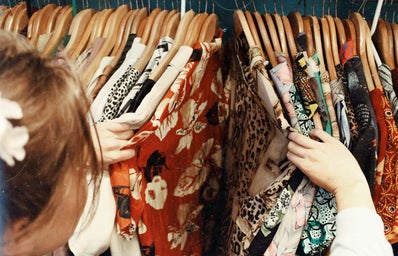It’s nothing new that social movements and activism have influenced fashion. Throughout history, activist groups have used clothes to bring about social and political change. Fashion has been used as a form of expression, but it also has been misconceived as superficial. Beyond the surface, however, there is more than looks. There is also empowerment, as fashion can challenge the limitations of gender.
During the women’s suffrage movement in the early 1900s, fashion was used as a political tool to innovate the feminine appearance by breaking traditional expectations. The goal was to portray strong and independent women, so the restrictive dresses from the Victorian era were left behind, giving rise to more comfortable clothes. The Victorian corsets were replaced with tailored suits and wide skirts, allowing more freedom of movement while still portraying respectability.
Decades later, the mini skirts from the 1960s would be looked at as a form of political activism and a sign of women’s liberation. Mary Quant, a British fashion designer, is suspected to be the inventor of the miniskirt, reflecting the desire for change. The mini skirt represented the modern, carefree woman.
“I feel fashion is about life. It’s about everything. It’s about the way we sit, the way we move, the way we talk, the style of voice. It’s about food, what we eat. It’s there—it’s about everything.” – Mary Quant
The Black Panthers Party, founded in 1966, was a response to the injustices and discrimination Black Americans were suffering. Through fashion, they manifested the ethos “Black is Beautiful” to send a message of liberation and black pride. Initially, roughly half of the group members were women, and by the 1970s, women occupied almost two-thirds of group membership. By leaving their hair natural, they were redefining beauty standards, expressing solidarity in an Afro hairstyle.
The fight for inclusivity in fashion is a great example of the power fashion holds. Fashion is currently addressing a number of social issues, embracing diversity, and going beyond stereotypes and aesthetics by promoting body positivity to create a positive change. As consumers, it is possible to make a feminist statement in our choice of clothing, expressing our morals and values.
“Fashion is the part of the daily air and it changes all the time, with all events. You can even see the approaching of a revolution in clothes. You can see and feel everything in clothes.” – Diana Vreeland
Clothes, makeup, and haircuts: we use all of them to make statements about what and who we are. From the bob haircut in the 1920s to the bikini in the 1950s to the lack of bras in the 1960s, fashion has been an effective tool in women’s fight for freedom.


